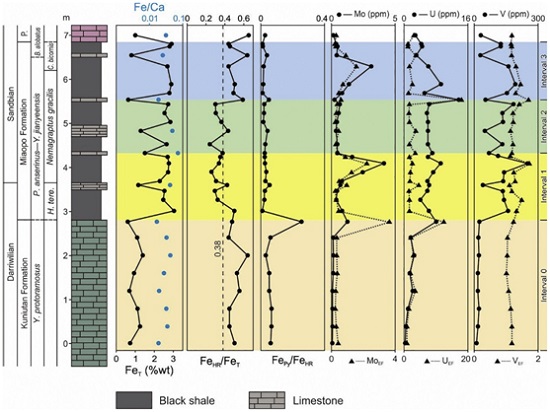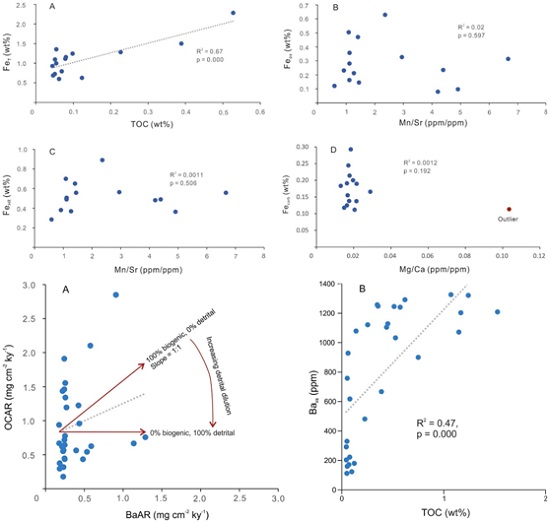The Darriwilian–Sandbian (Middle–Late Ordovician) isa critical interval in Earth history, recording the peak of the Great Ordovician Biodiversification Event (GOBE), as well as significant global environmental changes, including a rise in atmospheric O2 concentrations, the later part of a long progression toward cooler global temperatures, and a rise in global sea level to the highest point in the Ordovician. Transgressive black shales were deposited widely in China through the Middle and Late Ordovician transition, such as the Saergan Formation in Tarim, the Pingliang Formation in North China, the Hulo Formation on the Jiangnan Slope in South China, and the Miaopo Formation on the Yangtze Platform in South China.
Miaopo Formation is interpreted to have accumulated in an intra-shelf basin within the middle Yangtze Platform. The Miaopo Formation hosts the remnants of abundant plankton, necton and benthos in-situ, including graptolites, trilobites, chitinozoans; brachiopods, acritarchs, cephalopods, and echinoderms. Recently, Dr. ZHANG Junpeng and Dr. FANG Xiang from Nanjing Institute of Geology and Palaeontology, Chinese Academy of Sciences (NIGPAS), and colleagues from University of Chinese Academy conducted iron speciation, trace elements and total organic carbon in samples of the Miaopo Formation at Zhenjin section from Yichang, Hubei. This work has been published in PalaeogeographyPalaeoclimatologyPalaeoecology.
The results reveal moderate primary productivity and possible fluctuations in benthic redox. Upwelling during marine transgression is thought to have increased the availability of nutrients in surface waters, sustaining the biological pump. Enhanced export of organic matter would have consumed dissolved oxygen at depth, driving the system toward anoxia. However, it is also possible for deep-water renewal events to transfer more dissolved oxygen into the bottom water. Those proxies suggest high primary productivity and varying sea level (global and local), not benthic anoxia, as the driver of accumulated “black shale”. Thus, the local marine ecosystem thrived in this oxic intra-shelf basin, challenging the preexisting paradox that the high-diversity community flourished in an oxygen-depleted environment.
This research is supported by Chinese Academy of Sciences Strategic Priority Research Program, National Natural Science Foundation of China, Natural Science Foundation in Jiangsu Province, Ministry of Nature and Resources of China, and State Key Laboratory of Palaeobiology and Stratigraphy.
Reference: Fang, X., Li, W.J., Zhang, J.P.*, Song, Y.Y., Zhang, Y.D., 2020. Paleo-environmental changes during the Middle–Late Ordovician transition on the Yangtze Platform, South China and their ecological implications. Palaeogeography, Palaeoclimatology, Palaeoecology, 560: 109991. https://doi.org/10.1016/j.palaeo.2020.109991.

Selected redox proxies for the Zhenjin section

Plots of iron proxies and indices of diagenesis, as well as plots of Ba and TOC for the Zhenjin section
Download:
